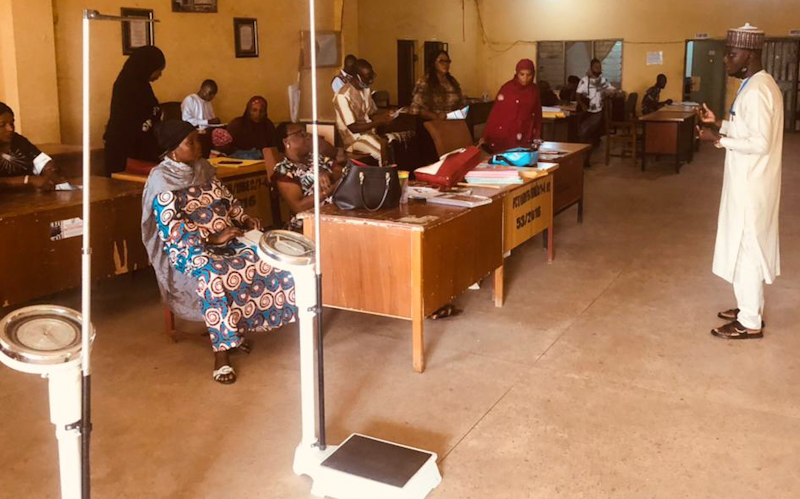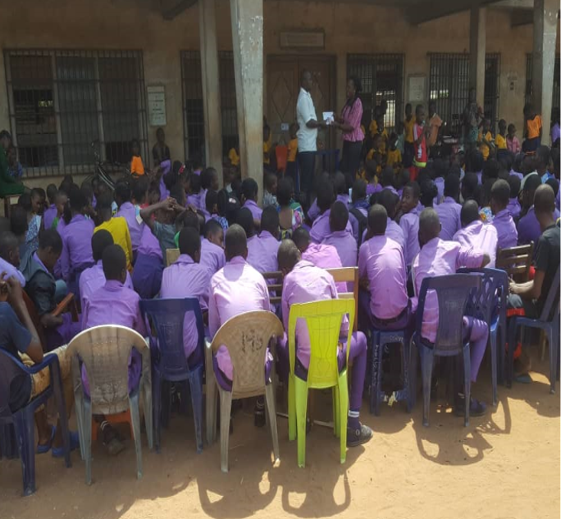Faire participer les écoliers au projet de sensibilisation et de prise en charge du diabète
Le diabète sucré de type 2 (DT2) est plus souvent diagnostiqué dans la population adulte. Toutefois, au cours des dernières décennies, sa fréquence chez les enfants a augmenté de façon marquée, en lien étroit avec l'augmentation de l'obésité infantile[1][2]. Une étude publiée dans le Journal of the Endocrine Society a montré que les enfants obèses sont quatre fois plus exposés au risque de développer un DT2 que les enfants dont l'indice de masse corporelle (IMC) se situe dans la fourchette normale[3]. En 2019, on estimait que 38,2 millions d'enfants de moins de cinq ans étaient en surpoids ou obèses, alors qu'en 2016, 340 millions d'enfants et d'adolescents âgés de 5 à 19 ans étaient en surpoids ou obèses[4]. Cette situation est préoccupante et a donné lieu à plusieurs efforts et recommandations à l'intention des parents/tuteurs pour que les enfants adoptent des modes de vie plus sains[4].
Le projet Diabetes Awareness and Care (DAC), mis en œuvre par le ministère fédéral de la santé (FMoH), en partenariat avec la Health Strategy and Delivery Foundation (HSDF), reconnaît l'importance de fournir aux individus des connaissances sur le diabète de type 2 (DT2). Le projet offre un meilleur accès aux services de dépistage de base afin de favoriser la détection précoce de la maladie, même chez les enfants. En plus de son travail avec les travailleurs de santé de première ligne et les établissements de santé, le projet DAC se concentre également sur la sensibilisation au diabète sucré des étudiants et des enseignants dans les écoles secondaires.
Le projet DAC travaille avec des organisations communautaires dans les communautés du projet pour effectuer des visites dans les écoles secondaires. Dans le FCT, nous travaillons en partenariat avec la Society for Women Development and Empowerment of Nigeria (SWODEN) et le Centre for Family Health Initiative (CFHI) dans l'État d'Imo. Ces visites des organisations communautaires visent à sensibiliser les enfants au diabète sucré et à les exposer très tôt aux dangers de la maladie. Les élèves acquièrent des connaissances sur la meilleure façon de prévenir le diabète et d'adopter un mode de vie plus sain. Le projet s'engage avec les enseignants (dans le contexte scolaire, qui agissent en tant que soignants) et les infirmières scolaires pour les doter des mêmes connaissances et outils afin d'accentuer les apprentissages.
Les organisations communautaires soutiennent également la création de clubs de santé ou le renforcement des clubs de santé existants. Ces clubs de santé sont des lieux où les représentants des organisations communautaires partagent des informations pratiques sur la vérification du poids et de la taille et le calcul de l'indice de masse corporelle (IMC). En outre, ils leur apprennent à modifier leur mode de vie, en leur montrant l'importance d'une alimentation saine, en leur évitant de fumer et de boire trop d'alcool.
Jusqu'à présent, dans les deux États, le projet a contribué à la création de 21 clubs de santé (13 à Imo et 8 dans le FCT), sensibilisé 528 enseignants (138 à Imo et 390 dans le FCT) et 2 483 enfants/jeunes (1 073 à Imo et 1 410 dans le FCT). En outre, le projet a contribué à l'élaboration de plans de cours et de guides thématiques axés non seulement sur le diabète, mais aussi sur les maladies non transmissibles dans leur ensemble. Il est prévu d'adopter les guides de santé dans les écoles même après la fin du projet.

Création de clubs de santé dans une école secondaire de premier cycle, Garki, AMAC LGA, FCT 
Sensibilisation et dépistage à l'école secondaire de premier cycle, Garki, AMAC LGA, FCT

Inauguration du club du diabète à l'école secondaire Diligent Amurie Omanze à Isu LGA, dans l'État d'Imo 
Inauguration du club du diabète à la Government Secondary School, Owerri, État d'Imo
Source
[1] Haines, L., Wan, K., Lynn, R., Barrett, T. et Shield, J. (2007). Rising Incidence of Type 2 Diabetes in Children in the U.K. Diabetes Care, 30(5), 1097-1101. doi : 10.2337/dc06-1813
[2] Mayer-Davis, E., Lawrence, J., Dabelea, D., Divers, J., Isom, S., & Dolan, L. et al. (2017). Tendances de l'incidence du diabète de type 1 et de type 2 chez les jeunes, 2002-2012. New England Journal Of Medicine, 376(15), 1419-1429. doi : 10.1056/nejmoa1610187
[3] Abbasi, A., Juszczyk, D., van Jaarsveld, C., & Gulliford, M. (2017). Indice de masse corporelle et diabète incident de type 1 et de type 2 chez les enfants et les jeunes adultes : A Retrospective Cohort Study. Journal Of The Endocrine Society, 1(5), 524-537. doi : 10.1210/js.2017-00044
[4] Organisation mondiale de la santé. (2021) Obésité et surpoids : Key facts, consulté le 23 juin 2021, sur https://www.who.int/news-room/fact-sheets/detail/obesity-and-overweight
Spécialiste des subventions et du développement des entreprises
Nous sommes à la recherche d'un spécialiste des subventions et du développement commercial très motivé et expérimenté pour rejoindre notre organisation. Le candidat retenu sera chargé d'identifier les possibilités de financement, d'élaborer des propositions de subventions et de favoriser les partenariats avec les donateurs potentiels et les parties prenantes (régionales et mondiales). Cette fonction joue un rôle essentiel dans l'obtention de fonds et de ressources pour soutenir la mission et les projets de notre organisation.
Postulez maintenantConsultant en santé publique, Guinée
Le consultant (en collaboration avec l'équipe de l'accélérateur) recueillera les résultats de l'outil, organisera une réunion avec les parties prenantes pour discuter des résultats de l'outil et produira un rapport sur les principales conclusions et recommandations de l'outil qui sera diffusé publiquement.
Postulez maintenantAttaché de santé publique, Sénégal
Nous sommes actuellement à la recherche d'un professionnel expérimenté de la santé publique au Sénégal pour travailler sur la plateforme anticipée de développement des capacités et de financement de la nutrition et fournir une assistance technique pour élever le financement de la nutrition et renforcer les capacités locales pour soutenir ces efforts. L'associé doit être bilingue (anglais et français).
Postulez maintenant